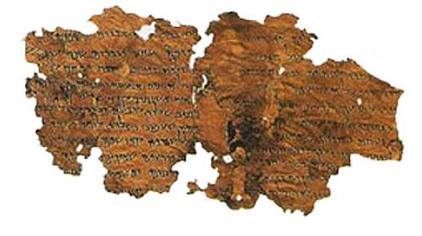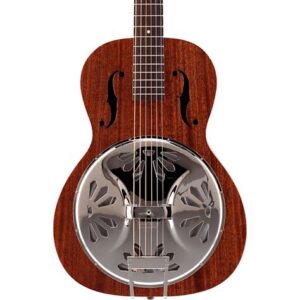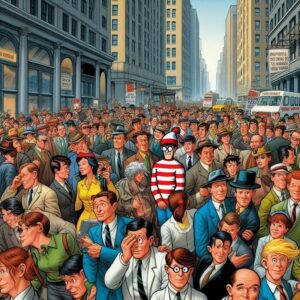
Among the Dead Sea Scrolls is a short and puzzling one, referred to as 4QMMT–found in Cave 4 of Qumran, and titled Miqtzat Ma’asei Torah (“some deeds of the Torah.”) It was compiled from hundreds of tiny fragments found in six manuscripts. The text is very incomplete, but it seems to be addressed from the local sect (whose leader, the “righteous teacher,” is described in other scrolls, such as Pesher Habakuk) to a rival sect (whose leader is described elsewhere in the scrolls as the “wicked priest.”) There is animosity and sectarianism, with references of “we” and “you”. Early commentary on this scroll identified the authors as the Essenes, described in Josephus Flavius’ writings, but now there are other understandings of the scroll, which identify the authorship as Sedducean. The scroll reflects preoccupation with the calculation of the Jewish calendar and the holidays, particularly in the context of purity laws (which makes sense; remember, these folks liked to bathe a lot and kept lots of vessels for ritual dinners, which suggests preoccupation with issues of ritual purity.) The text we have is pretty sparse–only 121 rows have been assembled and deciphered–and most texts and translations I’ve seen online add words to enhance the readers’ understanding.
Which is where our story, which appears to be torn out of the pages of a Dan Brown thriller, begins.
When the scrolls were originally discovered, Qumran was under Jordanian authority. The Jordanian government entrusted the study and interpretation of the scrolls to a small cadre of archaeologists, historians, and theologians. When the area of Qumran passed into Israeli hands during the Six-Day War, the Israeli government kept to this arrangement. Alongside the massive national effort to procure the many scrolls that had been stolen or sold into private hands, the smallish group of scholars continued to hold somewhat of a monopoly over studying the scrolls. One of these scholars was Prof. Elisha Qimron of Ben Guryon University, who would win, many years later, the Israel Prize for Jewish Studies. Qimron was a relatively young scholar at the time, and partnered with Prof. John Strugnell of Harvard in working on the scroll (Strugnell would later blemish his own legacy through antisemitic slurs). He gave his first paper on 4QMMT in 1984, at the first Biblical Archaeology Society’s (BAS) annual meeting, but his work on deciphering the scroll took eleven years.
It’s hard to overestimate the amount of work invested in this grand project. Out of the hundreds of fragments, Qimron assembled 60-70 bigger fragments, and then pored over them to figure out the logic of the scroll. Because the text was so sparse, this took a while, and the versions you can find now in fascimile and annotated versions often add words that are not visible in the original fragments, but that help understand the context and reflect deep familiarity with the historical context of the scrolls in general and of the sectarian scene in particular. Toward the end of the project, in 1990, Qimron and Strugnall reached an agreement for publishing the text, translations, and scroll copies, with Oxford University Press
What happened next was wild. As Qimron (mostly) and Strugnell made headway with the scroll, they shared their work with some colleagues to obtain feedback and commentary. One of these folks was Hershel Shanks, a lawyer and one of the editors of the Biblical Archaeology Review. In November of 1991, before Qimron and Strugnell published their findings, and without obtaining their success, Shanks published a book on the scroll with BAS, edited by James Robinson and Robert Eisenman. The book includes photos of the fragments. The introduction to the volume, authored by Shanks, included an appendix: the Qimron cypher of 4QMMT – unsigned and unattributed. The book sold several hundred copies worldwide.
In January 1992, Qimron sued Shanks, Robinson, Eisenman, and BAS, for violating his copyright. The case found its way to the Israel Supreme Court, which you can read here (in Hebrew.) It brings up some fascinating questions of intellectual property and academic integrity that go to the heart of the concept of creativity.
While Shanks et al come off as, not to put too fine a point on it, loathsome plagiarists, they did not perceive themselves as such, and their argument that that the scroll scholarship’s playing field was rigged from the very beginning has some merit. As I mentioned above, both the Jordanian and the Israeli governments curtailed scholarly access to the scroll by allowing only a small group of scholars access to the original materials. Shanks saw himself as an activist for academic freedom and saw the publication of the BAS book as an important first step in expanding access to the scrolls beyond what he considered a “research cartel.” As someone who is studying the scrolls in 2024 with my fellow students at the GTU under James Nati’s terrific tutelage, I’d be the first to agree that our understanding of these mysterious texts really benefits from a plurality of perspective, especially when the surviving manuscripts are so fragmentary. But these noble intentions are somewhat marred by the main defense argument brought forth by Shanks & Co., namely, that Qimron’s work is nothing more than the work of a kid putting together a jigsaw puzzle, and thus not something that a modern scholar can hold intellectual property rights to.
The reason I find this claim so fascinating is that it echoes the questions of ownership, authority, and creativity that scholars are raising about the scrolls themselves. Among the scrolls found in the caves are multiple copies of several works of scripture. The Temple Scroll, for example, considerably overlaps with Deuteronomy (several versions of which are present in the Qumran corpus), and some modern scholars are challenging the notion that these are merely “copies” of some existing canonical version of Deuteronomy from that time. In the Temple Scroll, as opposed to the original text, the Deuteronomistic edicts are not pronounced from Moses’ mouth, but from God’s mouth (he’s the “I” of the text)–is this a fluke? A literary choice? A more fundamental statement that the scribe/author of the scroll is closer to the original intent of the laws than the mainstream folks who held a monopoly over the temple, presumably in the Moses tradition? Some of the most interesting Dead Sea controversies involve the question of the scribes’ creativity and originality. I find it striking that the same questions emerge in modern litigation with regard to the work of the people piecing together the scrolls.
Here’s how the Supreme Court tries to make sense of the intellectual property question (my translation – H.A.):
[The deciphered text has two components]. The first component is the physical, palpable “raw material”: the fragments of a scroll created about two thousand years ago and found in Qumran; the second component is what made the assorted fragments into a deciphered text through the physical assembly of the fragments, their ordering, deciphering the scripture upon them to the extent that deciphering was necessary, and completing the gaps between the fragments. In other words, the art of breathing life and soul into the fragments is what made them into a living, meaningful text. Indeed, the scroll fragments themselves are now in the public domain and belong to everyone in the sense that anyone who wishes to assemble and interpret them may do so. But the fact that the “building blocks,” the materials the creator used for his work, are in the public domain, is unrelated to the question whether the creator possesses intellectual property in his creation.
What, therefore, is the crux of the intellectual property question? Some cases espouse the view that creativity is the key factor, while others highlight the importance of expending effort, time, and/or talent on the part of the creator. Selecting and editing can be proper subjects of intellectual property, but because of their curatorial nature, courts look at the extent to which original contributions were part of the editorial process.
This issue of original contribution was at the heart of the defense’s argument. This sounds paradoxical and, to be fair, pretty callous, but it essentially goes like this: The fact that Qimron put a lot of philological and contextual firepower into his completion of the fragmentary text ironically undermines his own claim to originality. In other words, if Qimron now argues–by virtue of the careful philology and history he used to complete the text–that his version is the “true” text of 4QMMT, then what is his original contribution to the scroll? what he has produced is basically a printout of the text of the scroll, whatever work he did melts into the scroll, and nothing here is “owned” by Qimron himself.
Thankfully, the court rejected this argument. By examining the work Qimron had done on the scroll, the judges concluded:
The court below carefully examined Qimron’s work process, intending to examine the level of originality in the process, not merely because they thought that his time investment was sufficient to acquire intellectual property. This process, which ended in the assorted fragments becoming a whole text with content and meaning, included several layers of creation. . . in this case, the layers of the creative process are interwoven and connected, dependent upon each other and impacting each other. So, the deciphering of the writing impacts the ordering of the “islands” of fragments in a particular way; the ordering of the “islands”, in turn, impacts the possible meanings of the text, its structure, its content, and the ways in which one completes the gaps. One cannot separate these layers, and they should be seen as one creative work. Examining it as a whole creation exposes undeniable originality and creativity. Qimron’s work was not, thus, technical, mechanical, like simple manual labor whose results are preordained. His spirit, the soul he imbued in the scroll’s fragments, which turned the fragments into a living text, were not merely the investment of human resources, effort, and sweat. They were the fruit of a process in which Qimron used his literacy, his expertise, and his imagination, exercised judgment, and picked among several choices.
Again, this view of Qimron’s creative process corresponds nicely with some modern understandings of the creative process employed by the scroll scribes themselves, two thousand years before Qimron first laid eyes on the fragments. It’s easier to see the creativity in a scroll like Pesher Habakuk, which explicitly use the original biblical text and then expound with their own original interpretations and implications of the text, but even choosing to tell the Deuteronomy text through a fresh perspective is a creative intellectual choice. Whether or not Qimron’s ancient counterparts took pride in their scholarship–or even considered it scholarship–is one of the many mysteries we will never be able to unpack. But the Supreme Court’s decision that assembling and completing the text is creative work might well echo some of our thinking about the creative process behind authoring these texts in the first place.
Shanks & Co. brought up two additional arguments which, I think, the court rightly rejected. The first was that awarding Qimron intellectual property would be seen as upholding the monopoly he and a handful of selected others had on the text; the second was that publishing Qimron’s text without attribution reflects common academic customs. Everything we know and believe about how the academic process does and should unfold requires an unambiguous rebuttal of these arguments. The first argument, taken ad absurdum, would suggest that people should not be rewarded for doing good scholarly work, because the more authoritative their perspective, the less room there is for others to offer alternative perspectives. Where, then, is the incentive behind putting one’s expertise and talent into speculative work that is persuasive and authoritative? And don’t we all benefit from the fact that any work that refutes someone else’s solid effort must be solid as well?
Similarly, taking the second argument ad absurdum would deter people from widely circulating and sharing their work before publication. There are many good reasons for having other experts take a look at your stuff before you embarrass yourself in public (remember this? Wouldn’t you want to avoid such mortification?). When I think about a scholarship area I’m a little bit more familiar with–epidemiological innovation–the world lost precious lives because of labs keeping their findings and innovations close to their chest due to inflated egos and competition, and saved lives when universities and labs set aside their egos and collaborated. To ensure collaborative behavior, we have to mutually agree to give credit where credit’s due, rather than assume that rumors in the field do enough to respect each person’s contributions.
Finally, to get a sense of the work invested in bringing these manuscripts to life, be your own hero: try to read the original scrolls and see how much edited and interpreted editions add to (or detract from) your understandings of these mysterious, ancient texts.




No comment yet, add your voice below!